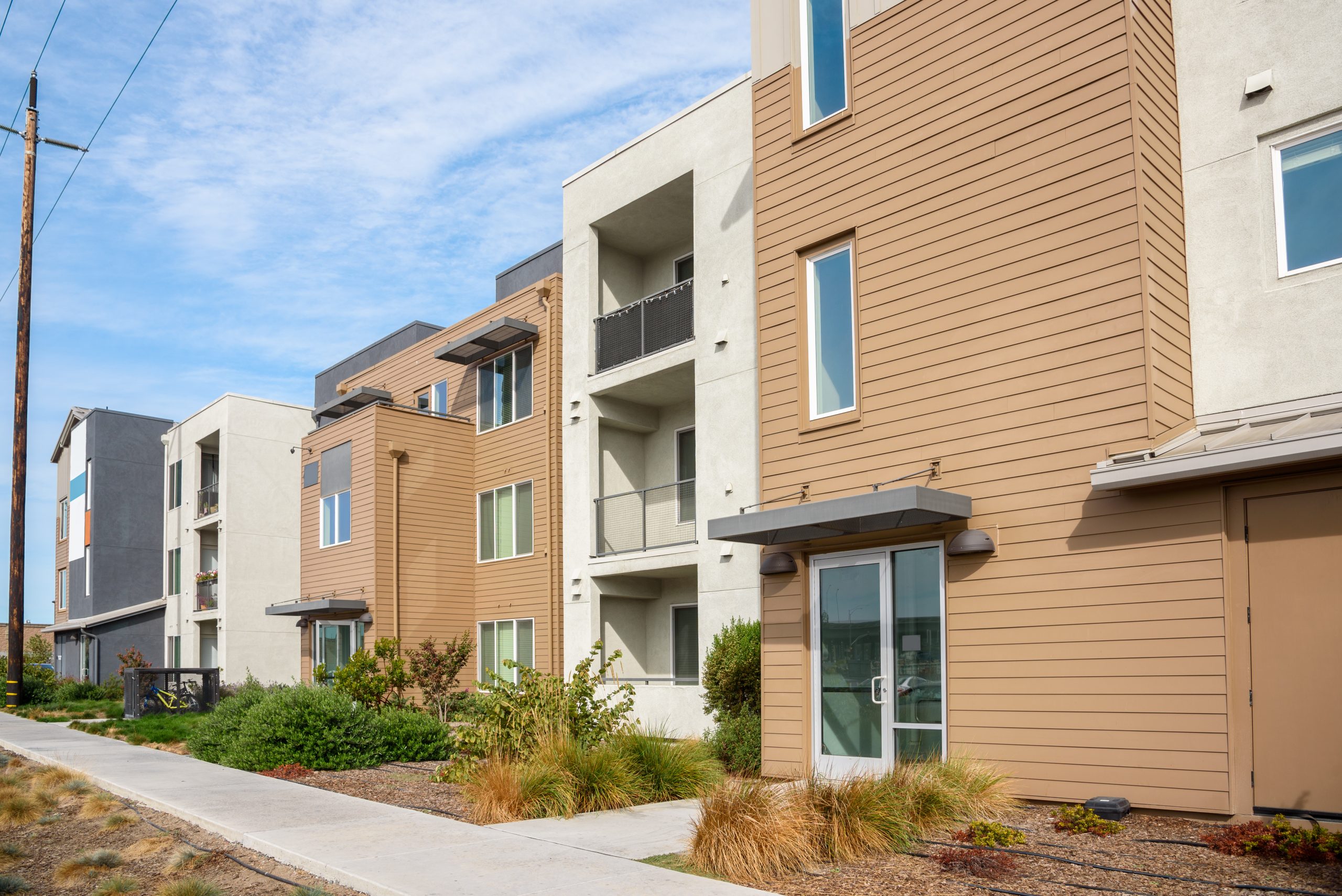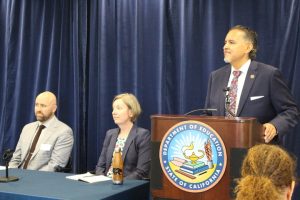On Aug. 14, CSBA led a breakout session at the California Department of Education’s (CDE) Housing Summit: Policy Solutions to Address the Affordability Crisis, where leaders in the building trades and commerce sectors joined with education leaders to discuss opportunities and barriers to creating education workforce housing.
Contributing to the larger initiative to create more affordable housing in California, the CDE referenced research released by CSBA and conducted by UCLA’s cityLAB and UC Berkeley’s Center for Cities + Schools (CC+S) and Terner Center for Housing Innovation. That report, Education Workforce Housing in California: Developing the 21st-Century Campus, found there are 75,000 acres of developable land on local educational agency properties statewide. The CDE translates that into the possibility of 2.3 million units of housing.
The opening panel addressed the housing affordability crisis across the state, the dire need for more affordable and diverse units at scale, and the difficulties in producing enough to fill the need. The panelists also spoke about the challenges of meeting California Environmental Quality Act (CEQA) standards when building affordable housing. It featured representatives from the California Community Reinvestment Corporation, California State Building Trades Council, California Chamber of Commerce and California Building Industry Association.
California State Building Trades Council President Chris Hannan noted the importance of subsidizing affordable housing. “When we build affordable and we ask a development to include a certain percentage of affordable units without providing funding, that cost is simply shifted across all the market rate units, pushing up the cost for those still able to afford the market rate,” he said. “So, when you are talking about building affordable housing, which we need and we need to be intentional, we need to have funding, whether it be tax credits, whether it be bonds — we need to have funding.”
CSBA breakout session
CSBA led a breakout session on creating education workforce housing (EWH) and its relationship to school employee recruitment and retainment. Housing affordability is one of the main barriers to attracting and retaining great teachers and staff across California. To address this, many LEAs in the state are looking into building EWH — homes for their employees on underdeveloped land they already own. CSBA Senior Director Andrew Keller opened the session with some background on CSBA’s involvement in EWH.
“Our CEO Vernon M. Billy had this idea years ago when he was hearing from board members that they were looking at getting rid of district property as a way to shore up budgets,” Keller said. “He wanted to change that narrative at the state policy level so that we’re thinking about these important property assets so they can stay in the community, but thinking of them in ways that benefit the district long term for their financial health and most importantly, help the students they serve.
CSBA then partnered with cityLAB, CC+S and Terner Center for Housing Innovation, with funding from the Chan-Zuckerberg Initiative, to produce the landmark report on EWH, Education Workforce Housing in California: Developing the 21st-Century Campus,” and provided resources and training opportunities to get board members up to speed on this new area.
Check out CSBA’s suite of materials on EWH including projects and case studies, interactive maps showing where surplus school property is located and where projects are underway, training materials, templates, research and business partners at www.csba.org/workforcehousing.
Sara Hinkley, California program manager at Berkeley’s CC+S, said that while the partnering organizations are providing participating LEAs with “technical assistance to help school board members and district staff get enough expertise to be able to make smart decisions about their property without having to become housing developers,” they are still learning as well.
“We’re still learning what obstacles districts run into and that informs our research and how to support districts moving forward,” she said.
When asked about ways the CDE could help support EWH, panelists and attendees pointed to the costs associated with the exploratory phase of the project — well before a specific developer is involved and shovels hit the ground.
“The one piece of assistance that we hear from districts a lot is how to support the up-front work before you get a developer,” Hinkley said. “It can take some funding to bring somebody on to evaluate your properties, to help you survey your staff, to help you to put together a survey exploring potentially putting a bond measure on the ballot — those all take resources that districts often feel reluctant to spend general fund money on. Predevelopment funding would be a huge service to get from CDE.”
Another main topic involved the funding secured for building housing units. “The type of financing you pursue has a direct impact on who you can house,” said Manos Proussaloglou, assistant director at UCLA’s cityLAB. “LA Unified School District projects used low-income housing tax credits, a federal program, and as a result there is a particular set-aside of units that need to be at different area-income levels.”
He said this wasn’t an issue when using general obligation bond money or Certificates of Participation, which both have more flexibility with what income levels you set. Hinkley added that since the time LAUSD built, Assembly Bill 2295 (co-sponsored by CSBA) was enacted to allow for the reservation of units for only district staff, but their use of the tax credit still restricted units to be for certain income levels — most of which the average teacher salary has them priced out of.
Next steps
Interested in pursuing EWH in your LEA? Apply for CSBA’s 2025 Education Workforce Housing Workshop Series for the chance to join a cohort of peer districts exploring the issue. The application window is open from Sept. 3-18. To make the most of your application, watch CSBA’s webinar on tips for applying here.
Access all of CSBA’s education workforce housing resources at www.csba.org/workforcehousing.






